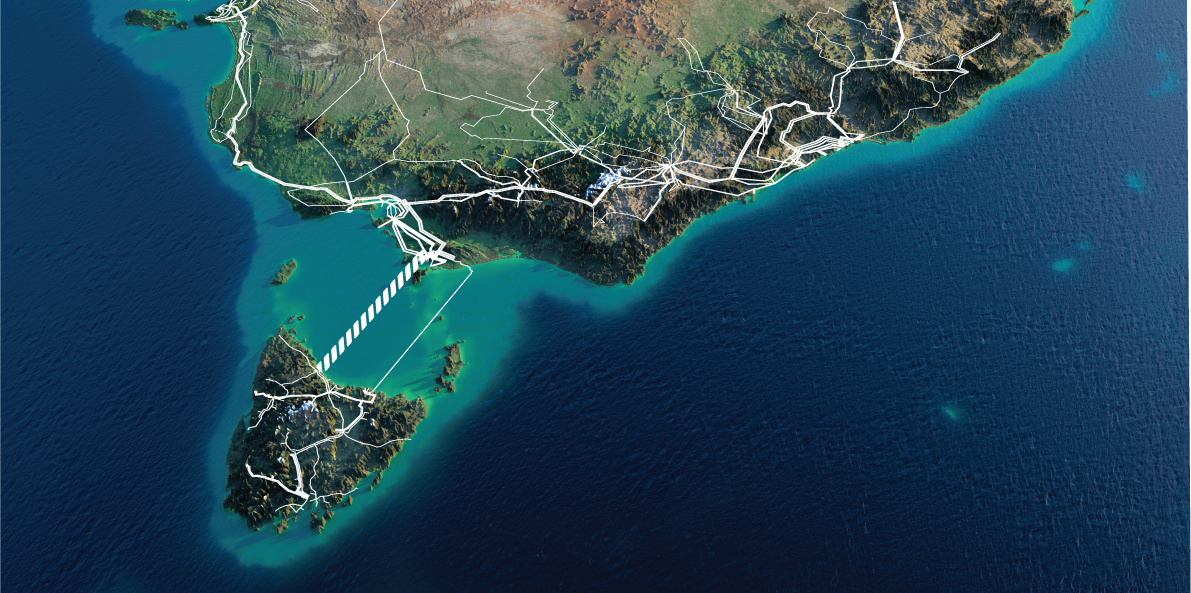The Marinus Link interconnector between Tasmania and Victoria is a critical part of Australia’s future electricity grid to supply secure and reliable renewable energy to consumers, a Commonwealth parliamentary inquiry has heard.
The House of Representatives Standing Environment and Energy Committee inquiry into dispatchable energy generation and storage heard the 1500-megawatt Marinus Link will have the capacity to transmit the electricity equivalent of the former Hazelwood power station in the Latrobe Valley – enough to power 1.5 million homes.
Project Marinus General Manager Bess Clark told the inquiry, which is investigating Australia’s rapidly changing energy generation mix, that Marinus Link will help provide secure, reliable and affordable power to consumers well beyond the borders of Tasmania and Victoria by unlocking Tasmania’s abundant, low-cost wind resources and pumped hydro storage facilities.
“Project Marinus is one of a number of key transmission projects that are needed to unlock and share renewable generation, storage and dispatchable energy across the National Electricity Market (NEM) to best meet future customer needs,” Ms Clark said.
“To put the project scale in context, 1500 megawatts is around the same size as the former Hazelwood power station in the Latrobe Valley. It’s enough energy at a given point in time to supply around 1.5 million homes.”
AEMO’s 2020 Integrated System Plan (ISP) named Marinus Link as a critical and actionable project that needs to continue through design and approvals processes, so that it is ready for service as soon as the market needs it.
In mid 2021 Project Marinus passed the Regulatory Investment Test for Transmission (RIT-T). The project is progressing all the necessary work to support a final investment decision by 2023-24.
Tasmania is already Australia’s largest generator of renewable energy, underpinned by the State’s extensive hydropower resources. In addition to the State’s latent hydro capacity, the capital cost of pumped hydro storages in Tasmania is around 30 per cent lower than sites elsewhere in the NEM.
However Ms Clark told the committee that Project Marinus’ benefits flow well beyond Tasmania.
“It is very much a Victorian and Tasmanian project and indeed a national project. About half of the investment and the assets are in Victoria and Commonwealth waters.
“So whilst it certainly has assets and provides benefits to Tasmania it also has assets and provides significant benefits to Victoria and the nation more broadly.
“It can be windy in Victoria and not windy in Tasmania or vice versa, so really what you want is a network that can be moving energy from where it’s been generated to where customers use it.

Speaking before the hearing, Ms Clark said it was pleasing to see the need for dispatchable energy being given serious consideration across the political spectrum.
“We urge the Committee to note the importance of the Marinus Link project for maximising access to Tasmania’s world class dispatchable energy generation and storage resources, supporting efficient energy generation and deep storage, and putting downward pressure on prices for customers in all regions of the NEM,“ Ms Clark said.
Background
The $3.5bn ($2021) Project Marinus interconnector is a proposed 1500 megawatt electricity and telecommunications connection between Victoria and Tasmania called Marinus Link, plus supporting transmission network developments in Tasmania’s North West.
Marinus Link involves approximately 255 kilometres of undersea High Voltage Direct Current (HVDC) cable and approximately 90 kilometres of underground HVDC cable. It will also include converter stations in Tasmania and Victoria, and approximately 220 kilometres of supporting High Voltage Alternating Current (HVAC) transmission network developments in North West Tasmania.
The current target date for commissioning and commercial operation of the first 750 MW stage is 2027-28, with the commissioning and commercial operation of the second 750 MW stage currently scheduled for 2029-30.
Marinus Link will cut at least 70 million tonnes of CO2 by 2040, the equivalent of taking approximately half a million cars off the road.
1500 megawatts equates to supplying 1.5 million Australian homes with electricity at any given time.